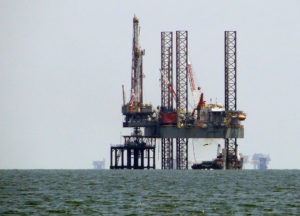Tropical Storm poses threat to New Orleans and the rest of Louisana
Tropical Storm Barry, the first tropical storm to threaten the U.S. this year, is expected to make landfall in Louisiana on Saturday, June 13. Parts of the state have already experienced the effects of this storm, seeing nine inches of rain and winds of over 40 miles per hour. Extreme flooding is occurring throughout the New Orleans area with even more on its way. The storm is slow moving, at a speed of only 5 miles per hour, and is expected to bring further rain and flooding to the area. The National Weather Service predicts the storm surge will add up to five feet of additional water to the Mississippi River, reaching a height of around 20 feet. Floodwalls and levees in place in New Orleans are only equipped to reach 20 feet, making this storm a threat to the infrastructure and resilience capabilities of the city.

Plans in Place
The city of New Orleans has begun bracing for the possible effects of the storm. The New Orleans Police and Fire Departments have barricaded flood-prone areas to ensure drivers do not enter high waters. The Orleans Parish Communications District, the answering line for all emergency communications, will increase staffing by 50 percent to ensure they are able to process all calls. The mayor of Grand Isle, Louisiana has called for the towns evacuation, citing expected rainfall of up to 10 inches and high tide that could reach three feet above ground. Additional mandatory evacuations have been ordered for those living in Plaquemines Parish, located on Louisiana’s south-eastern tip and close to the Mississippi river. The Southern Louisiana Flood Protection Authority has closed more than 200 of its 250 flood gates, with more expected to close before the storm reaches land.
Additional evaluation of the New Orleans floodwalls and levees has also begun to take place. The Mississippi River could crest at 20 feet, which higher than flood protections in some segments of the city. A map of levee heights throughout the city shows that some levee locations along the Lower 9th Ward and Algiers are only protected between 18 and 19.99 feet. If the river reaches heights of over 20 feet, extreme flooding and damage to infrastructure could occur. The levees are currently being re-measured to ensure heights that will protect against potential flooding. If necessary, Hesco baskets, plastic buckets filled with sand, will be used to increase the height of both levees and floodwalls.
Possible Impact

The potential structural impact to New Orleans poses a test to the cities resilience capabilities. While preparation for damage is taking place, there may be significant loss to productivity in the near future. The campus of the U.S. Army Corps of Engineers New Orleans District office is located just along the Mississippi River. This is one of the lowest points along the river system, and levees are only predicted to protect to water heights of up to 19.7 feet. This comes despite Congress’ 2014 approval of the construction of new floodwalls around that campus that would reach a height of 24 feet. However, the river has been unusually high for an extended period of time, preventing the beginning of the construction. Officials located at the campus have already begun using Hesco baskets to prevent the river from flooding into the office’s infrastructure. If locations like this throughout the city face similar risk, the cost of resolving future damage will be significant.
The impact of this storm is not just structural. The tropical storm is currently located near a large number of oil rigs in the Gulf of Mexico. Employees from offshore oil and gas operations have started to evacuate. 15 production platforms and three oil rigs are in the path of the storm, while 3 additional rigs have moved out of the way. Due to this disruption of the oil extraction process, U.S. oil prices have risen to $60 a barrel and oil futures for August delivery, which indicate the expected rise in price, are $60.43. This is the first time futures have topped $60 since May of this year, and the value is a seven week high. If the storm continues to disrupt oil production or delivers damage to facilities, oil and gas prices could increase further in the near future.
Sources and Further Reading
Tropical Storm Barry develops in the Gulf, threatening more epic flooding in Louisiana – CNN
These New Orleans levees could be overtopped by Mississippi River surge ahead of storm – NOLA.com
City of New Orleans preparing for tropical weather impacts – City of New Orleans
OPCD activates level 2 staffing in preparation for storm in Gulf Coast – OPCD
New Orleans: evacuations ordered as city braces for possible hurricane – The Guardian
